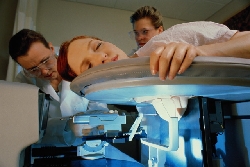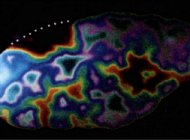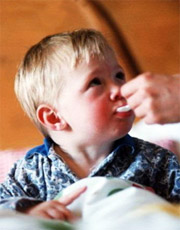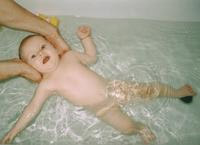Intramuscular injections in the gluteal region
 The palm of the hand with the thumb as far as possible is applied to the thigh so that the end of the thumb reaches the anterior-inferior axis of the Ilium, and its base touches the upper edge of the greater trochanter (movement in the hip joint helps to reveal the greater trochanter).
The palm of the hand with the thumb as far as possible is applied to the thigh so that the end of the thumb reaches the anterior-inferior axis of the Ilium, and its base touches the upper edge of the greater trochanter (movement in the hip joint helps to reveal the greater trochanter).
The index finger should be on the skewer line. The location of the injection corresponds to the head of the second metacarpal bone. In other words, the best place for intramuscular injection is in the middle of the line (parallel to the longitudinal axis of the body), which connects the upper edge of the Ilium and the greater trochanter. Intramuscular injections around this point can be done within a radius of 2-2.5 cm.
One should be careful of injections near the skewer for fear of falling into the vascular-rich periarticular region. If you deviate from the indicated point to the back, you can get into the subcutaneous fatty tissue of the nadpyagodnoy area.
The preparation of the syringe, the treatment of the hands of the nurse and the skin of the patient are performed according to the general rules of asepsis. The nurse should wash the hands with soap and a brush under a stream of hot water just before assembling the syringe or treat it with another method used in the clinic (first solution, iodopirol solution). Do not touch foreign objects with clean hands. Therefore, the place and means for injection must be prepared in advance. It is necessary to make any injections only with sterile gloves (according to the order No. 408 for the prevention of the spread of viral hepatitis in the country).
Most often, intramuscularly administered antibiotics, magnesium sulfate, serum.
Antibiotics are produced in special bottles in the form of crystalline powder. Before use, it is dissolved in a sterile isotonic solution of sodium chloride, double-distilled water or a 0.5% solution of novocaine. Some antibiotics are already produced in a diluted form. Typing the medicinal substance in the syringe, proceed to the treatment of the patient’s skin with 70% ethyl alcohol.
It is not recommended (according to some authors) to treat the skin with alcohol solutions of iodine, as they have a tanning effect and make it difficult to puncture the skin.
Holding the syringe with the needle perpendicular to the skin above the injection site, make a shot and enter the muscle through the subcutaneous fat. Press the skin around the puncture site with your left hand during the injection.
Techniques for administering drugs:
the skin over the puncture site is stretched with the index and thumb of the left hand, and a syringe is inserted with the right hand;
the skin above the puncture site is collected in a loose fold with the index and thumb of the left hand;
the syringe is held in this way; the second finger holds the piston, the fifth finger holds the needle coupling, and the other fingers hold the cylinder;
the position of the syringe should be perpendicular to the patient’s body surface;
in case of severe astenisation of the patient, an injection is made into the gluteal region, as in the thigh — the syringe is held at an angle, like a writing pen, in order not to damage the periosteum;
with a decisive movement, the needle is inserted with a syringe into the middle of the skin fold to a depth of 7-8 cm, leaving 1 cm above the sleeve, since at this point the needle often breaks; you can not make too sudden movements and you can not slow down the movement of the syringe with a needle, it must, as it were, “fall under the weight of its weight”;
the introduction of only needles without a syringe is not currently used because of the many side effects and complications; such an introduction was called the “cotton method”: the needle was clamped between the second and third fingers of the right hand, and after the injection was quickly attached a syringe;
After inserting the needle into the muscle using any of the above methods (except for the initial insertion of the needle without a syringe), you need to pull the piston towards you, make sure that the needle is not in the blood vessel (no blood appears in the syringe), only then press the piston, gradually replacing solution to the end. After the blood appears in the syringe, it is necessary to remove the needle and enter it in another place; Remove the needle should be a quick movement, pressing to the skin with a cotton swab dipped in alcohol.
The initial introduction of a needle without a syringe is possible only in limited cases: even minor amounts of some medicines (acrychin solution) get into the subcutaneous fatty tissue and cause severe irritation and often abscess formation. Such medications should be administered in two steps: first, introduce a dry sterile needle into the muscle, tested for air permeability, and not in contact with the medicinal substance prior to administration; then quickly attach the syringe and slowly inject the solution.
Complications
All the complications resulting from intramuscular injections can be divided into 3 groups: mechanical, chemical and infectious.
A needle fracture with intramuscular injections occurs for the same reasons as with subcutaneous, but most often due to a sudden contraction of the muscles during the rough introduction of a blunt defective needle.





